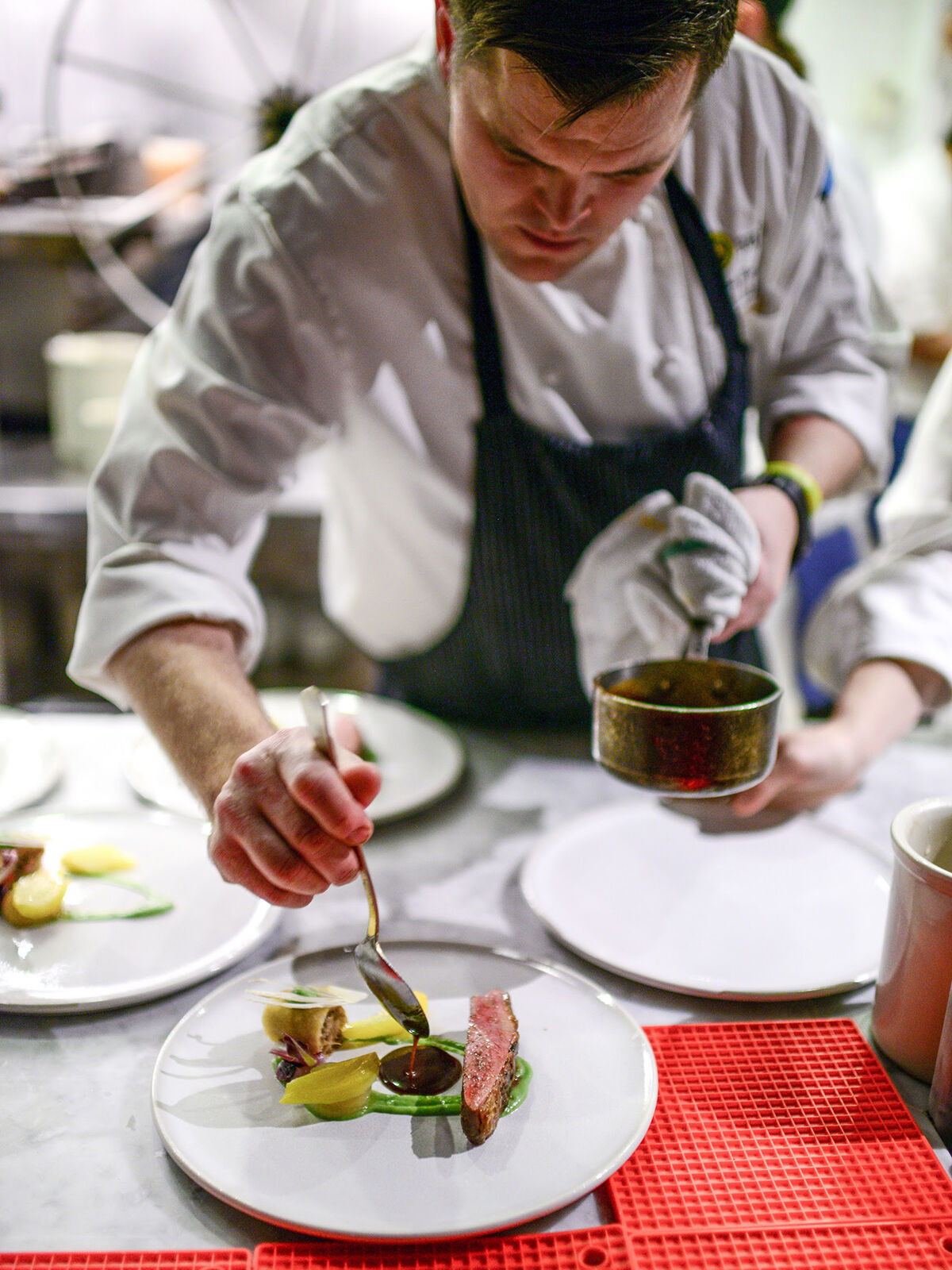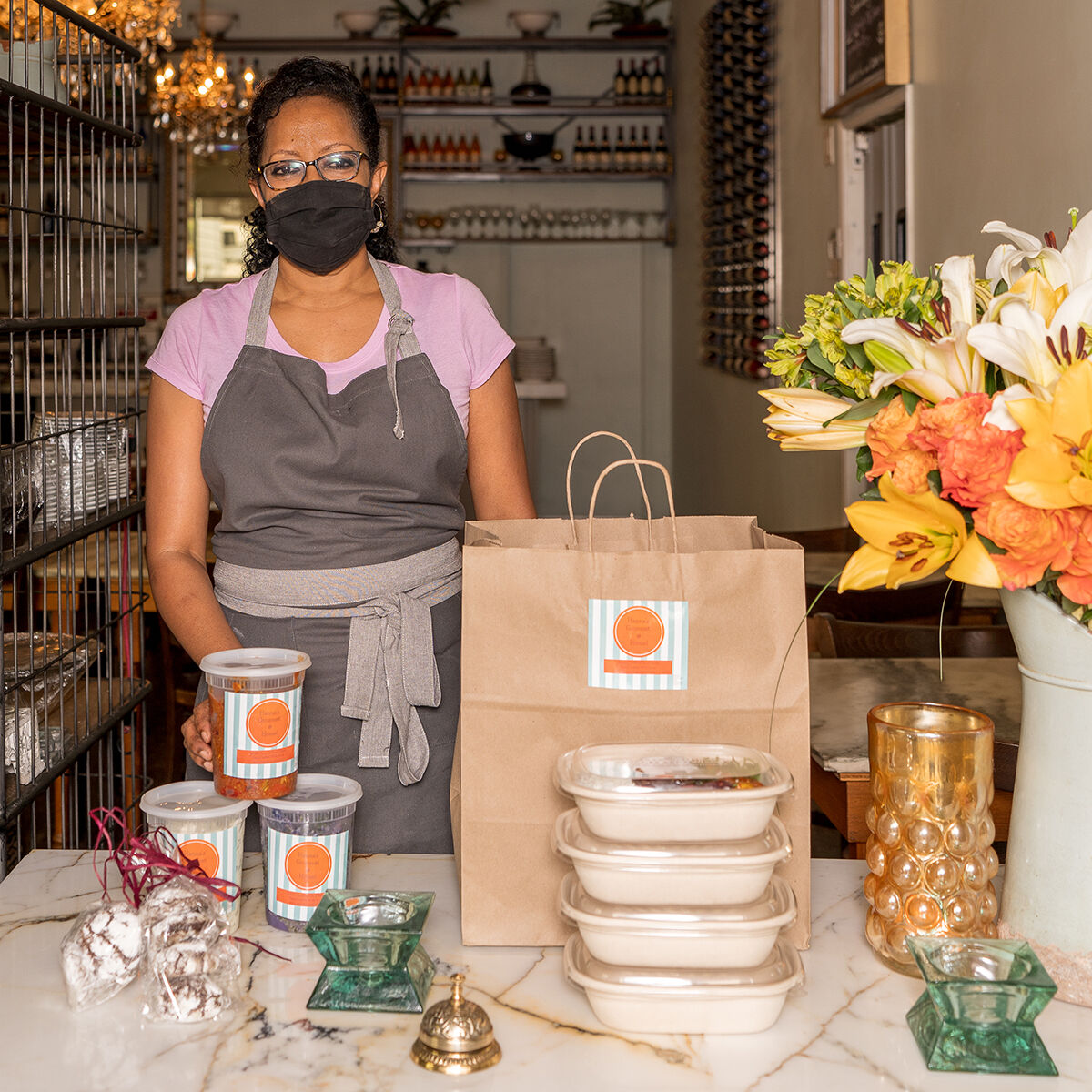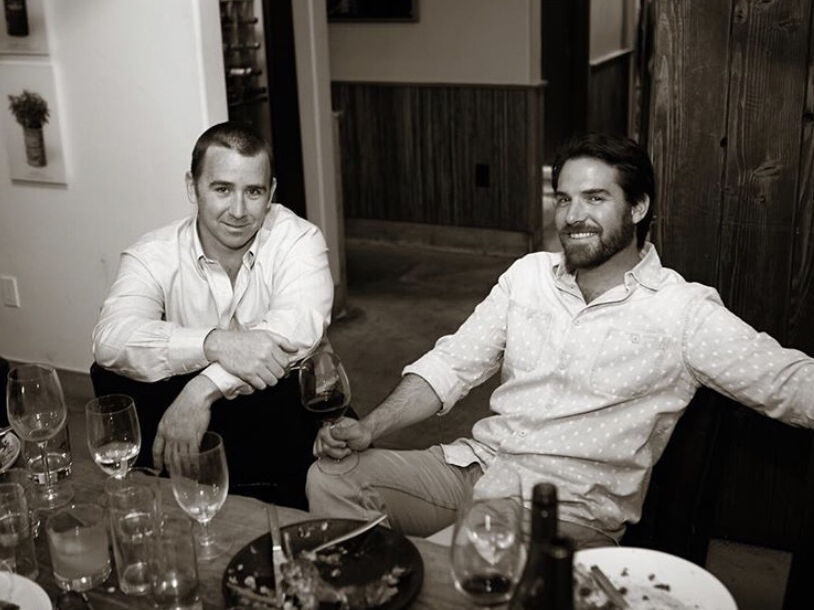
Chef Travis Swikard’s anticipated restaurant, Callie, is on hold.
Restaurant life has never been easy, but it’s never been this hard. Those that are built for to-go business are sheepishly having banner years. Those who rely on butts in seats are faced with losing everything.
“We’re fine, all things considered,” says Arturo Kassel, co-owner of Whisknladle Hospitality. “But the shoe hasn’t dropped yet. A lot of restaurants are hanging on and keeping employees because of the PPP money. Now that’s running out, and when it does, it’s a whole different calculation.”
During the pandemic, governments are trying to balance public safety while simultaneously keeping small businesses afloat. Without further assistance or a breakthrough in containing the coronavirus, this will be one of the most historically brutal winters the restaurant industry has ever seen.
These are the stories of three local restaurant owners at three distinct stages of the fallout, and how they see a path forward.
The Dream Delayed
Ten years. That’s how long San Diego native Travis Swikard worked as the right hand of famed French chef Daniel Boulud. When they say “put in your time,” this is what they mean. Time was put. While in New York at Boulud Sud, restaurateur David Cohn ate Swikard’s food and liked it so much he threw out an idea: Come home, let me help you open your own restaurant.
Swikard made the jump. He moved his wife and two young boys across the country to Rancho Peñasquitos, and the plans for Callie were announced. In the food world, Cohn bringing Swikard to our city was the equivalent of the Padres landing Manny Machado—shock, buzz, pride. We expect bright, bold-faced free agents to land in bright LA or bold-faced New York. You know it was huge news because Swikard and his restaurant are still talked about two years later, and Callie hasn’t even opened.
They were slated for this March. Then September. October. Now, probably next year. Some better time.
“This month, I moved here two years ago,” says the chef. “As much as I’m like, ‘Let’s go!’ the best decision you can make is the best business decision. And the best business decision is to always take your emotions and get them out of the way. David said to me, ‘You only get one opening—if it’s 25 percent capacity, your opening is not grand.”
The chef is grateful, recognizes his luck. Had they opened in March, they would’ve been shut down. The most sainted person in the restaurant industry right now is a “good landlord,” and he’s got one—they aren’t making Swikard pay until Callie opens. The hardest part was what it did to his people: He’d put together his dream team, only to welcome them with goodbyes.
“I hired a general manager who worked with Daniel for a long time—I kept him on through this entire thing and then had to let him go,” he explains. “He was just sitting in his apartment in this new city, he doesn’t have any friends; it’s emotionally hard for him, too. I hired a chef de cuisine who was working at Saison in San Francisco. The day he moved here I had to tell him we’re not opening. I had a bar manager leave his job and I had a sommelier move from Twist in Las Vegas.
“They all moved to work for me and I had to tell them sorry. It put me in a black hole for a couple of weeks. It’s my first time owning a business; I want the best for my team and I care about them. There’s nothing I could’ve done, but I really felt like I let them down.”
Swikard climbed out of his black hole. He’s helping Cohn make meals for people who’ve been laid off, putting on collaboration dinners with local chefs, and working with Smarts Farm, which teaches underprivileged children how to make their own food from the garden. The silveriest lining, for him as for all of us, is the reclaimed time. Time for family, and to get to know small, independent farmers and food makers on a personal level—people he’ll feature at Callie whenever it opens.
“There are some really incredible people in San Diego we’re not giving enough business to—not just the chefs but the farmers,” he says. “When you’re working, it’s hard to find the time to develop the relationships. So a lot of chefs just call up a produce company. We have to find a way to get more access to them.”
The Dream Adapted
Hanna Tesfamichael stands behind a table blocking the blue-edged doorway of her bistro in University Heights. She greets customers with a smile behind her mask, handing each a hefty brown bag full of stews and soups and international dishes in plastic containers. Behind her are dozens and dozens of these bags. This is where she and her husband stand every Sunday now, reconnecting with longtime regulars.
When news of the virus broke, she knew the initial two-week shutdown would turn into much, much longer.
“The week before this all started, I didn’t have the fear,” she says. “I knew Italy and New York were bad, but it wasn’t too bad in California. But then I saw the fear in my customers. They started to email to see if I was going to install an air dryer, asking for changes. When our sales were less than 40 percent of normal, that’s when I knew I wasn’t watching enough news. My sister is a nurse and she said this is going to be big.”

Hanna Tesfamichael of Hanna’s Gourmet shifted service to takeaway meal kits.
James Tran and Olivia Beall
In January and February, Tesfamichael was sicker than she’d ever been. She wonders now if it may have been COVID-19, and this played a part in her decision to stay shuttered long after California allowed restaurants to reopen for takeout and delivery. “It was the first time I was down on my knees and realized my immune system is not as strong as I’d like,” she explains. “And some of my employees lived with their extended family and worked other jobs. We would all be exposed.”
Tesfamichael had been ready, though. She and her husband had been preparing for catastrophe since day one.
“We knew an earthquake could happen and everything can stop,” she says. “We invested so much money to build this from the ground up. We had to secure it somehow. So we said, from day one, we cannot go into debt. If we had to change anything or needed equipment, we waited until we could afford it. We were old school. For our tables, I looked for marble on clearance. I went to Caffè Calabria and got chairs they were changing out. I controlled our labor by working a lot of hours. So that gave us control to always be prepared for six months ahead.”
Tesfamichael never intended this to be a restaurant. After moving to San Diego from Eritrea, she studied food and nutrition at SDSU, took a job at Jenny Craig, then opened her catering kitchen of global food in 2011. “People would take it to go, and then they started sitting down, they started asking for lunch,” she laughs. Piece by piece, she built and adapted it into a neighborhood bistro with family-style dinners and weekend brunch.
And now she’s adapting again, reverting a little closer to her original idea from a decade ago.
“Even before we closed, we talked about doing this,” she says. “The restaurant scene was changing, with more counter service and takeout. The virus has opened eyes for people about working from home. So even after, people are not going to dine out as much during the day.”
While she was closed, regulars kept calling, emailing. She listened. They were tired of doing dishes. They felt restricted to the same old takeout. They didn’t feel they were eating healthy enough. They wanted Tesfamichael’s international food and they wanted enough to eat for days.
“They wanted a personal chef,” she says. “I said, ‘Well, I can’t come to your house, but let me see what I can do.’”
So she studied the meal-kit delivery services, like Blue Apron and HelloFresh. She hired cooks back. They work in shifts through the night so they’re not breathing the same air. Her husband, an electrician, comes in to do the dishes. Every week, she designs a new global menu—emails it to her customers, sets a Thursday deadline for orders, and packages it in leftover-sized portions. She stands in that doorway for four hours on Sunday, chatting from a distance, divvying out days’ worth of home-cooked meals.
Her regulars have shown up. They still have wants. They want her to reopen the dining room. They want more pickup days. They want a larger menu again. She patiently tries to help them understand.
“I have a small window of pickup time because if I expose myself more, I run the risk of getting it and having to close down,” she says. “I tell them I’m a little short-staffed, so the menu is smaller. Right now, the government agencies do their part, we have to do our part, and the customers have to do their part. We make sacrifices.”
The Dream Gone
The phrase “farm-to-table” has been co-opted and is nearing total meaninglessness. But the movement was beautiful in its infancy—chefs using local growers and makers, forming personal relationships, changing menus constantly depending on what comes off the farm truck. Whisknladle in La Jolla, while not the first, was one of the early adopters, and it made them a star.
The duo that started Whisknladle—restaurateur Arturo Kassel and chef Ryan Johnston—made their mark by bridging the gap between casual and fine dining. Johnston cooked the same from-scratch meals you’d find at James Beardy places, but servers wore T-shirts, dinner music was Hendrix, and customers complained about the ever-changing menu. This all sounds commonplace now, but in 2008 it was not normal.

Chef Ryan Johnston and Arturo Kassel of Whisknladle Hospitality
“It definitely wasn’t for everybody and certainly kind of a shock for La Jolla,” Kassel says. “We had people who wanted to come to the same table, get that same macadamia-nut-crusted mahi-mahi. They flipped out that we changed everything. We didn’t know what we were doing, I was 26. Ryan and I met a week before we took over that location. He’s my longest relationship, and, aside from the one with my wife and kids and immediate family, my most important one.”
Whisknladle got national media attention, and so did San Diego by proxy. In May, they shuttered for good. It wasn’t all due to the pandemic, but as with most restaurants considering a change, it was a drastic accelerator.
“It was time,” says Kassel. “COVID was the nail in the coffin. Ironically, our competitive advantage helped open up a whole genre and style of dining in San Diego. But then farm-to-table exploded and you lose that edge a bit. When we first opened there was no food scene in Little Italy, no Liberty Public Market, Carlsbad, or Encinitas. The main problem is, that kind of food is so labor intensive. With wages rising, eventually the margins just aren’t there.”
Kassel and Johnston are still together, heads down, focused on navigating their other projects (Catania, Gravity Heights, Milagro Farm Winery) through the pandemic. But Whisknladle is the reason all of those exist. It was the original good idea that made their names, changed their lives, convinced investors to back their next steps.
“I was pretty stoic when we announced it,” he says. “We had 30-some-odd employees, great people. We were doing the right thing by not stringing them along. It was when the phone calls and DMs started coming. People expressed an outpour of support. I found myself crying all night, just an uncontrollable amount of emotion I wasn’t prepared for. Not because we regret the decision. It was very validating that it was more than just another restaurant. For people in the industry and people who came through those doors for 12 years, Whisknladle meant something.
PARTNER CONTENT
“Whisk wasn’t the most beautiful restaurant. And it was always a better restaurant than it was a business. But I’m most proud of how, though I didn’t grasp it at the time, it impacted so many people and left a legacy behind.”













